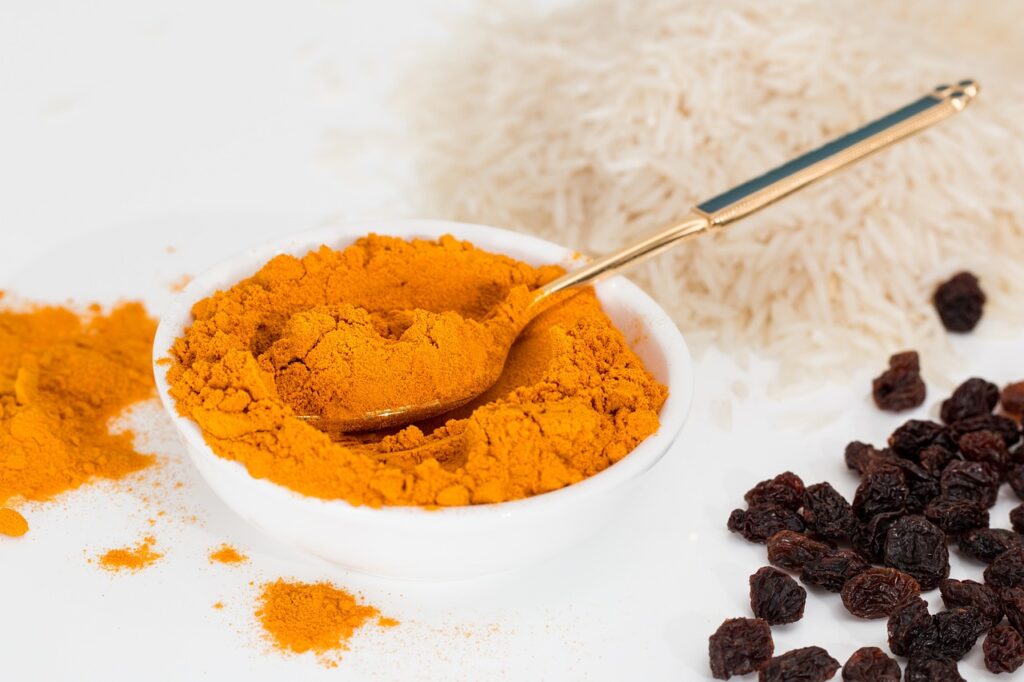Haldi (Turmeric): Nature's Golden Gift for Health and Flavor

-
- Introduction: The Elegance of Haldi (Turmeric)
When it comes to spices, there are not many that can compare to the fascinating history, beautiful color, and many uses of haldi, which is more commonly known as turmeric. This spice, with its golden-yellow color, has been used for centuries in different parts of the world, both for cooking and for its health benefits
-
- Turmeric Through the Ages
The story of turmeric is one of timelessness. Native to the Indian subcontinent, it has been cultivated and celebrated for over 4,000 years. From the streets of ancient Indus Valley civilizations to the grand feasts of Mughal emperors, turmeric has graced countless tables, adding its distinctive color and flavor to a wide array of dishes.
Haldi, scientifically known as Curcuma longa, is a rhizomatous herbaceous perennial plant that belongs to the ginger family. Its roots have been used for thousands of years in India, where it is considered not just a spice but also a sacred symbol of purity and prosperity.
Dating back to ancient times, Haldi played a crucial role in traditional Indian medicine, known as Ayurveda. Its use was not only limited to health but also extended to beauty rituals and religious ceremonies. Haldi was revered for its healing properties, and it was considered a remedy for various ailments.
-
- Nutrition Table: A Glimpse into Turmeric’s Richness
Before we delve into the myriad benefits and uses of haldi, let’s take a peek at its impressive nutritional profile:
| Nutrient | Content per 100g |
| Calories | 312 |
| Protein | 9g |
| Carbohydrates | 67g |
| Dietary Fiber | 22g |
| Total Fat | 3.3g |
| Vitamins and Minerals | |
| Vitamin C | 25.9 mg (43% DV) |
| Vitamin E | 3.1 mg (15% DV) |
| Vitamin K | 13.4 µg (17% DV) |
| Potassium | 2525 mg (72% DV) |
| Calcium | 183 mg (18% DV) |
| Iron | 41.4 mg (230% DV) |
| Magnesium | 193 mg (48% DV) |
Note: DV (Daily Value) is based on a 2000-calorie diet.
As you can see, haldi is not just a flavor enhancer; it’s a nutritional powerhouse. Rich in dietary fiber, vitamins, and minerals, it provides a wholesome boost to your diet.
-
- Health Benefits of Haldi
The popularity of Haldi in recent times is not without reason. Modern research has confirmed many of its traditional uses, revealing a treasure trove of health benefits:
-
- Anti-Inflammatory Properties: Haldi contains an active compound called curcumin, which has powerful anti-inflammatory and antioxidant properties. It may help reduce inflammation and alleviate conditions like arthritis and inflammatory bowel disease.
-
- Antioxidant Protection: Curcumin is known to neutralize harmful free radicals in the body, which can protect cells and DNA from damage and potentially reduce the risk of chronic diseases.
-
- Digestive Aid: Haldi has been used for centuries to aid digestion. It may stimulate bile production and support liver function, making it useful for indigestion and bloating.
-
- Brain Health: Some studies suggest that curcumin may have a role in improving cognitive function and reducing the risk of neurodegenerative diseases like Alzheimer’s.
-
- Skin Benefits: Haldi’s anti-inflammatory and antibacterial properties make it a popular ingredient in skincare products. It can help with acne, eczema, and wound healing.
Heart Health: Curcumin may help improve heart health by improving the function of the endothelium (the lining of blood vessels) and reducing the risk of heart disease.
-
- Culinary Uses of Haldi
Beyond its medicinal properties, Haldi is a staple spice in Indian cuisine. It not only adds a vibrant yellow hue to dishes but also imparts a warm, earthy flavor. Here are some popular culinary uses of Haldi:
-
- Curries: Haldi is a key ingredient in most Indian curries, lending its color and flavor to dishes like curry chicken, lentil dal, and vegetable curries.
-
- Golden Milk: This trendy beverage combines Haldi with milk and other spices to create a soothing and nutritious drink known for its anti-inflammatory properties.
-
- Pickles: Haldi adds a unique taste to pickles and preserves, often combined with other spices and vegetables for a flavorful condiment.
-
- Rice Dishes: In some regions of India, Haldi is added to rice dishes, giving them a distinctive aroma and appearance.
-
- Precautions: Enjoying Haldi Safely
While haldi offers a treasure trove of benefits, it’s essential to consume it mindfully:
-
- Moderation: Excessive haldi can overwhelm the taste and cause digestive discomfort. A little goes a long way.
-
- Staining: Haldi can stain fabrics and kitchen surfaces. Handle it with care, and clean any spills promptly.
-
- Allergies: Some individuals may be allergic to haldi. If you’re uncertain, consult a healthcare professional.
-
- Conclusion
Haldi, or Turmeric, is not just a spice; it’s a cultural symbol, a source of well-being, and a flavorful addition to culinary delights worldwide. With its rich history and well-documented health benefits, it’s no wonder that Haldi is finding its way into kitchens and wellness routines around the globe. For those in the export business, it represents an opportunity to share the magic of this golden spice with the world, spreading health and happiness one pinch at a time. So, whether you’re adding it to your personal wellness regimen or considering it as a potential export item, Haldi is indeed a golden treasure worth exploring.
